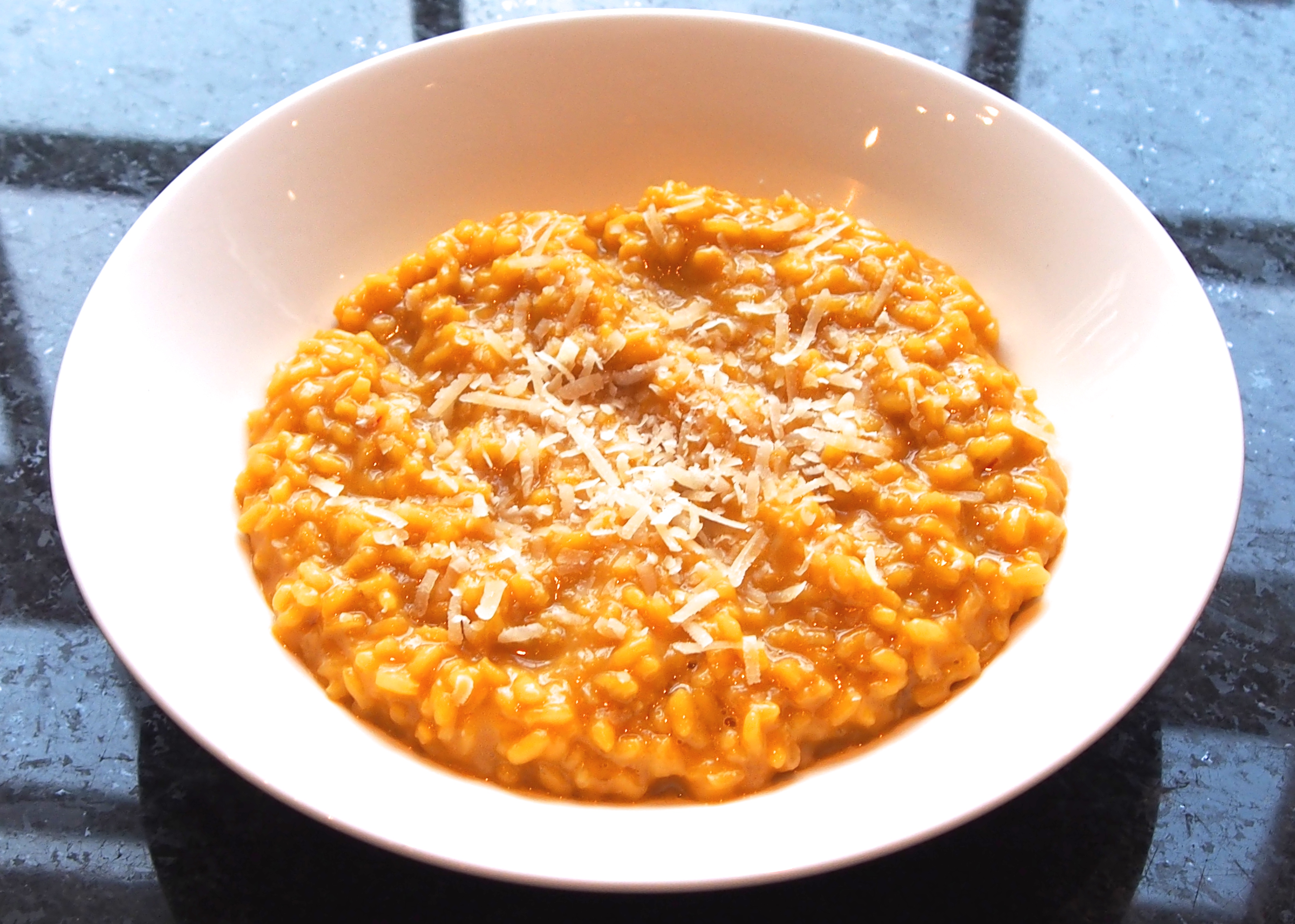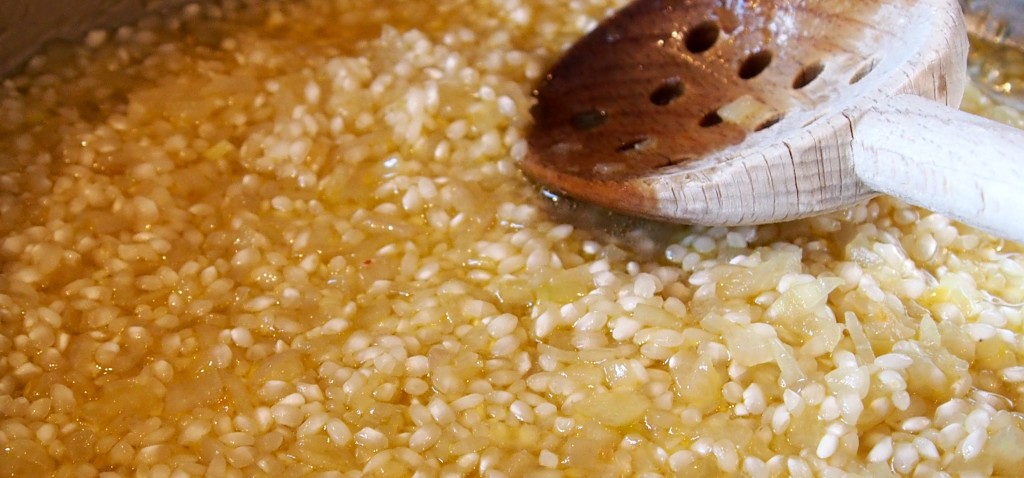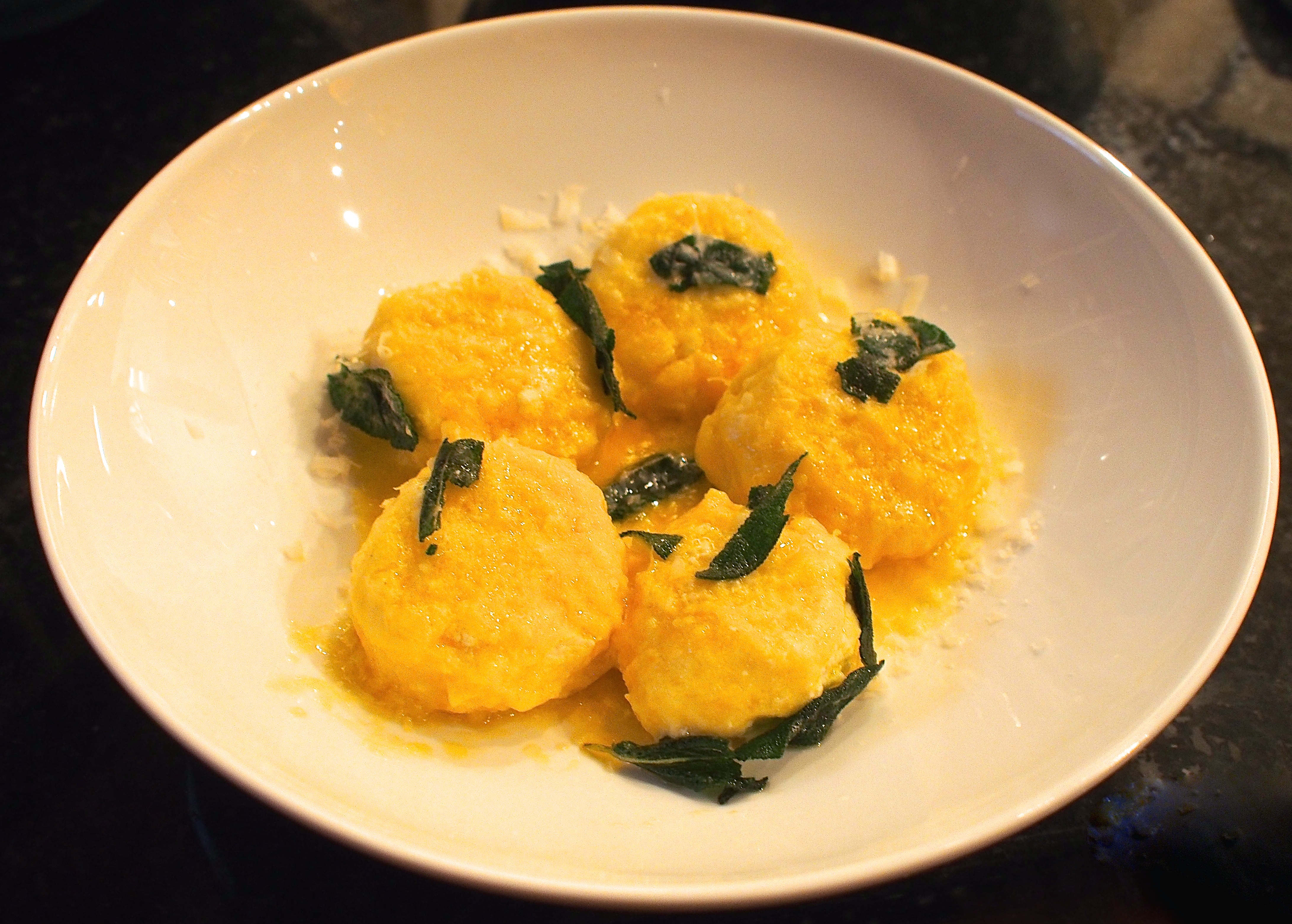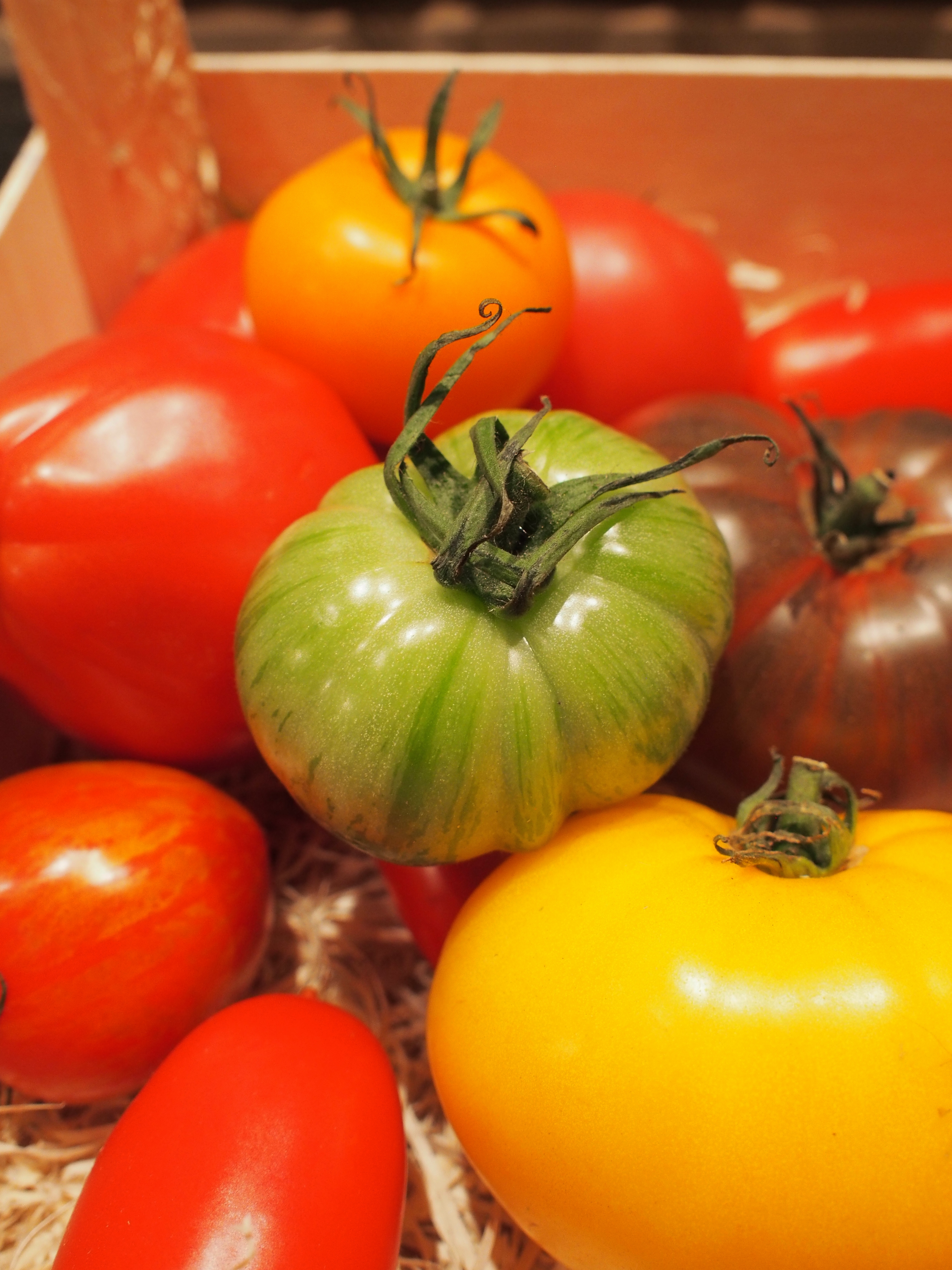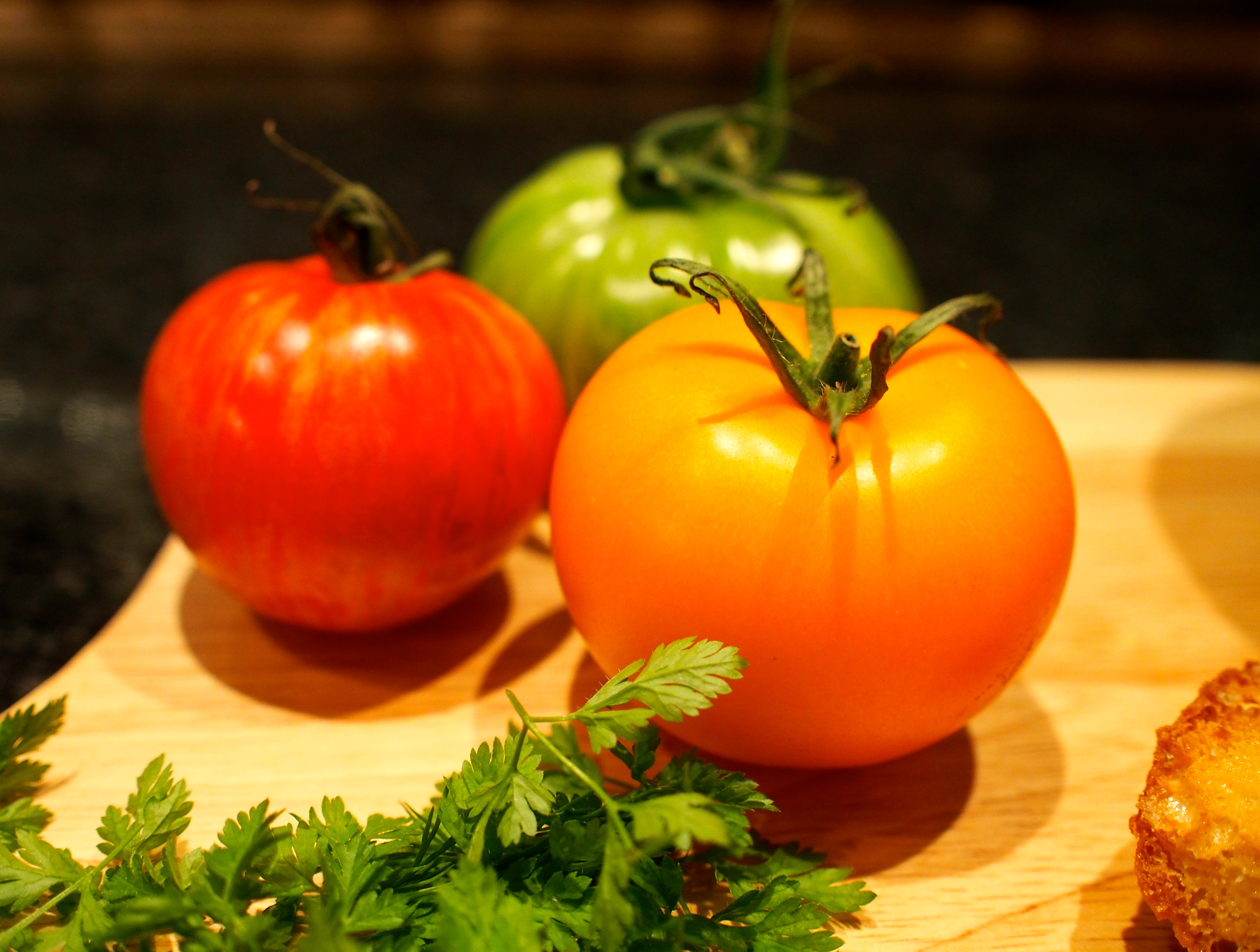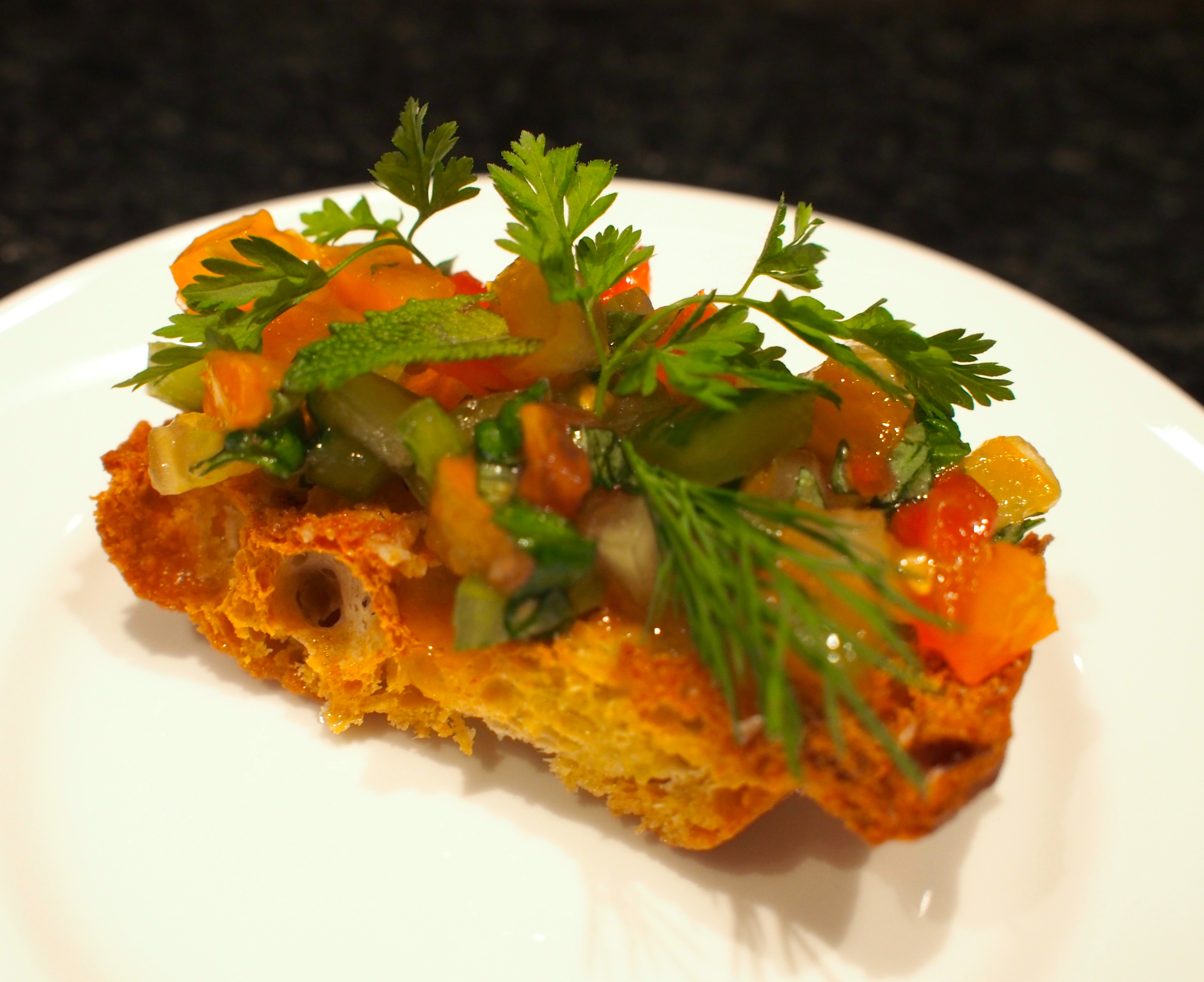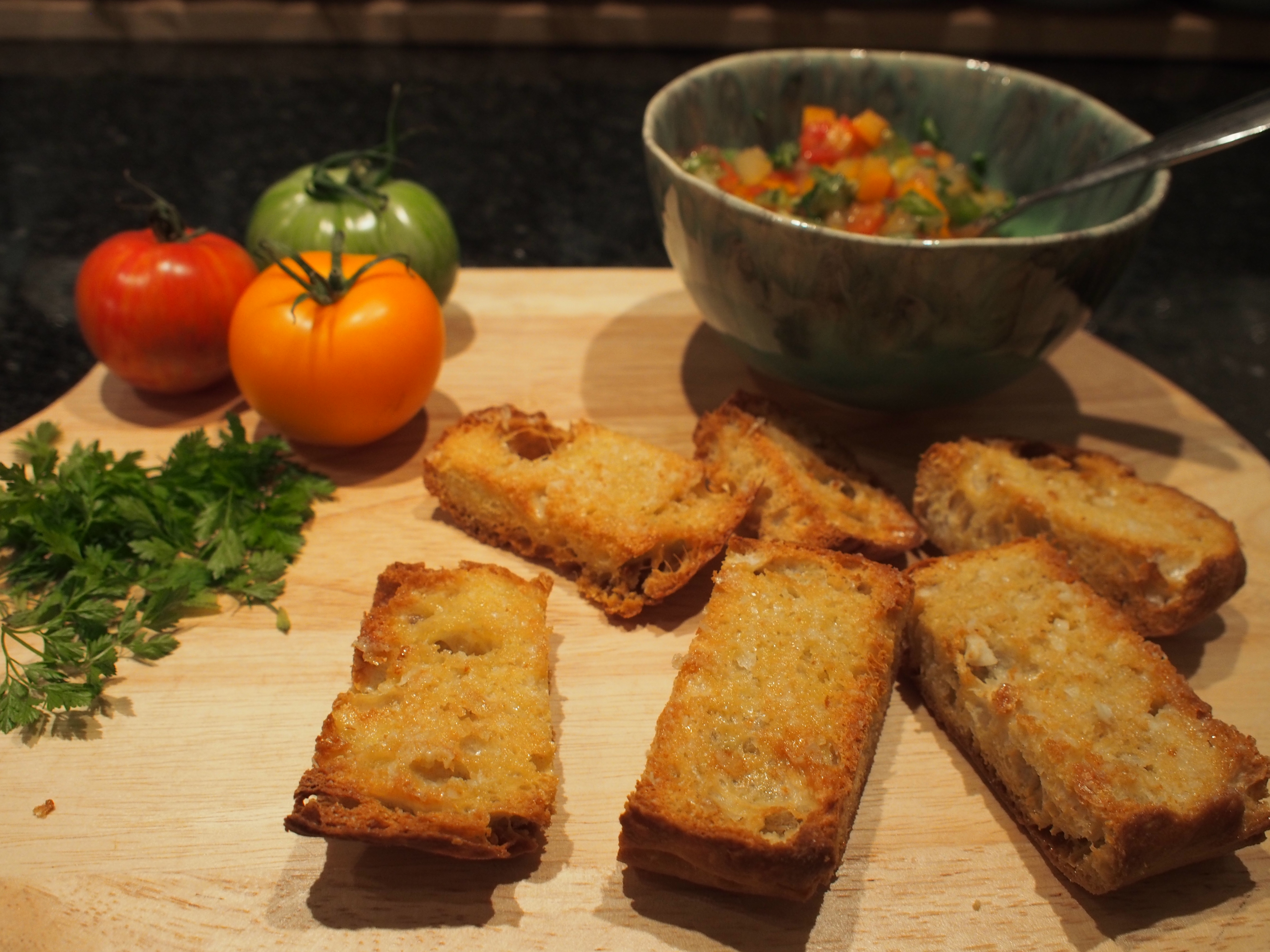Saffron risotto | Risotto alla Milanese: the favourite comfort food of my thirteen year old. She’s always loved risotto, and I can only put that down to the holidays we took when she was very tiny, when we would spend the summer months in Italy… One of her first ever risotto’s was a Barolo and gorgonzola affair, eaten al fresco in Lucca, the spectacular walled town to the north of Pisa. Just over a year old, the Italian’s adored her gusto as she wolfed down half of my supper, having already eaten a healthy portion of my carpaccio… To this day carpaccio and parmesan are a key part of her diet. I’ve never really considered before how much this has to do with early exposure, but in retrospect, some of these early ingredients are the very bedrock of her diet.
There’s quite a lot of detail to put into any post on risotto, so I’ve separated the parts out, with one lengthy post on the finer details of risotto here… And here is my saffron risotto:
Ingredients:
250g risotto rice, preferably Aquerello rice
1L of good chicken or vegetable stock
3 shallots, very finely diced
a large pinch of good saffron
1 large glass of white wine (I used a mixture of Noilly Prat and Marsala)
60g of cold, diced, unsalted butter (approx)
40g of hard cheese, such as Grana Padano or Parmesan
Method:
- Sauté the shallots in the butter and olive oil until they soften – you’re not looking for the shallots to colour… And unlike some risotto bases, the soffrito for saffron risotto doesn’t include garlic. My shallots were chopped a little too large here – ideally you want them to be the same size as the rice.
- In the meantime, gently heat your stock – do not boil it, or you may reduce the stock to fast, and make it too strong.
- Take a ladleful of the stock and put it into a small bowl – add your saffron and allow it to infuse
- Once the shallot has softened sufficiently, pour in the risotto rice, and stir it into the base – you’re actually looking to toast the rice (tostatura), and you can see each kernel will become more translucent. After a minute or so, pour in the alcohol of your choice… Ordinarily it’s a glass of white wine, but I’ve seen a variety of things used from Vermouth to Masala – personally I like the herby’ness of Noilly Prat, but on this occasion also used a little Madeira to push up the richness of the flavour base, and enhance the colour of the dish (apparently in Italy it’s not uncommon to add a tablespoon of passata, to increase the richness of the colour). Allow the alcohol to bubble until it has been absorbed into the rice. I do this until you can draw a line through the rice, with no liquid left in the pan.
- If your saffron has “bloomed” sufficiently you can add it to your rice (I used to add it to the stock, but it seems to work better this way).
- From this point on the process can be repeated with the stock – add a ladle at a time until it sits just above the rice, and keep stirring it until the stock has been absorbed.
- Once the risotto has absorbed all the liquid, and is just al dente, take it off the heat and set it aside for a minute. This resting process allows the temperature to come down just enough, before you beat in the cheese and butter (the mantecatura).
- Add sufficient cheese and cold diced butter to develop a creamy sauce – I can’t really tell you how much, as this bit is quite personal. I probably used about 60g of butter, and 40g of Parmesan.
I’ve shown the whole process in the following photographs….
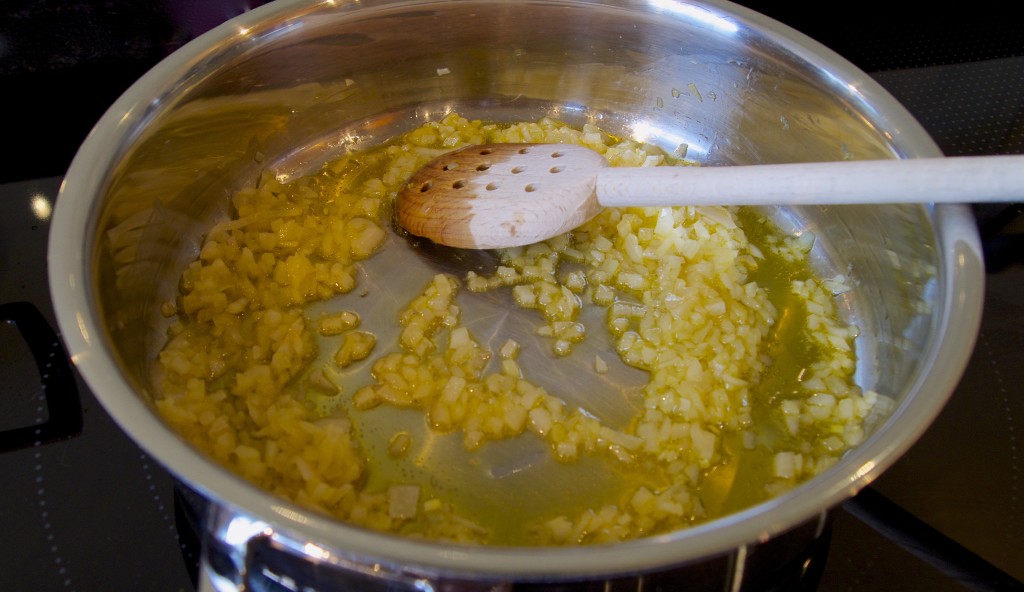
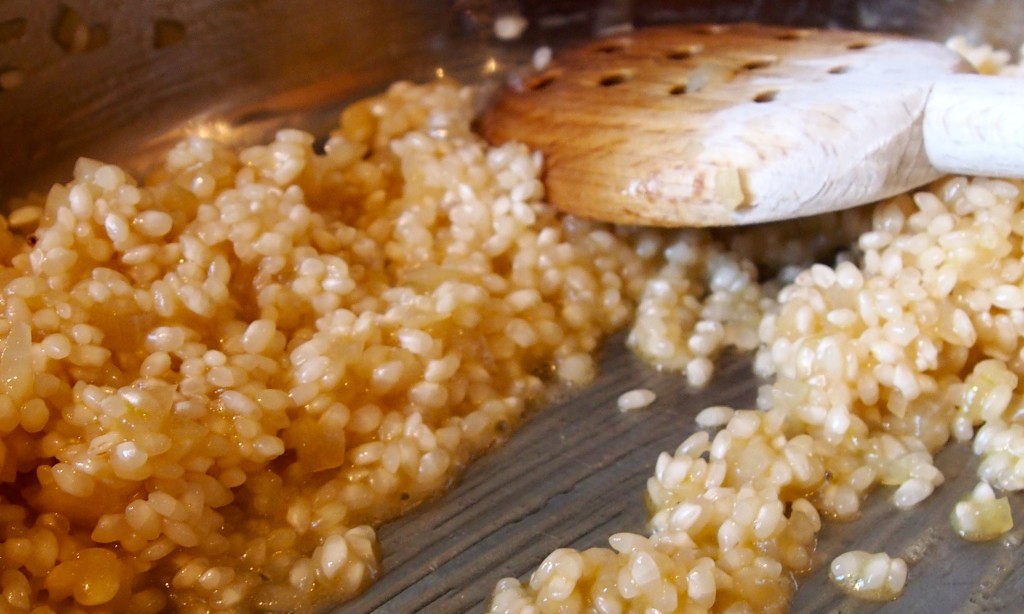
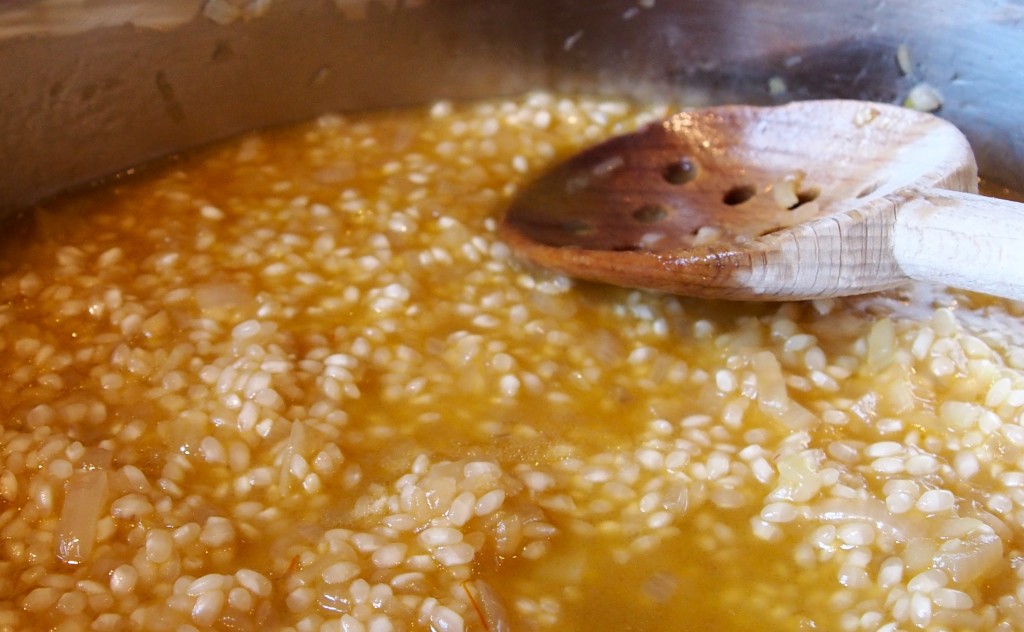
Add a ladleful of stock
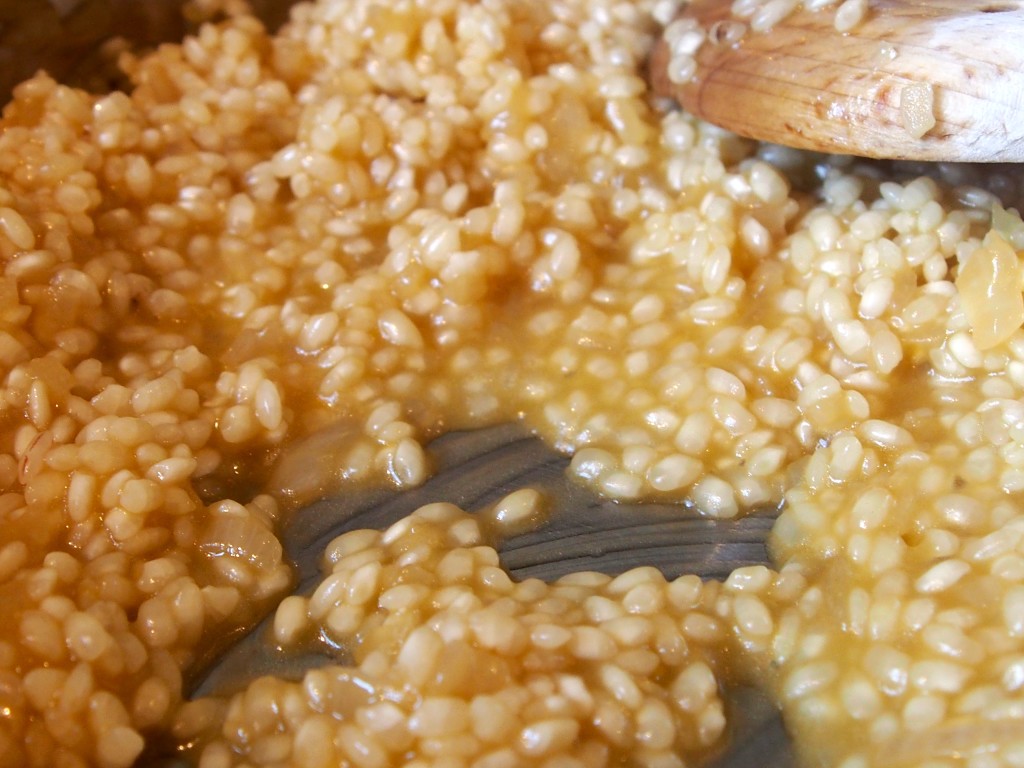
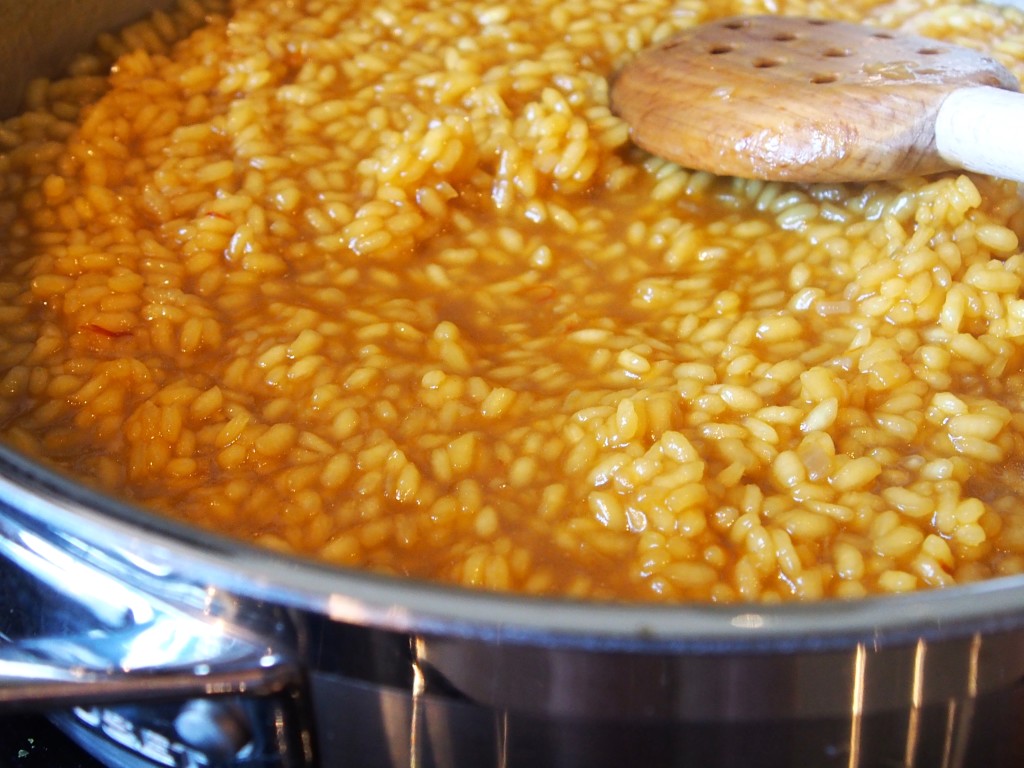
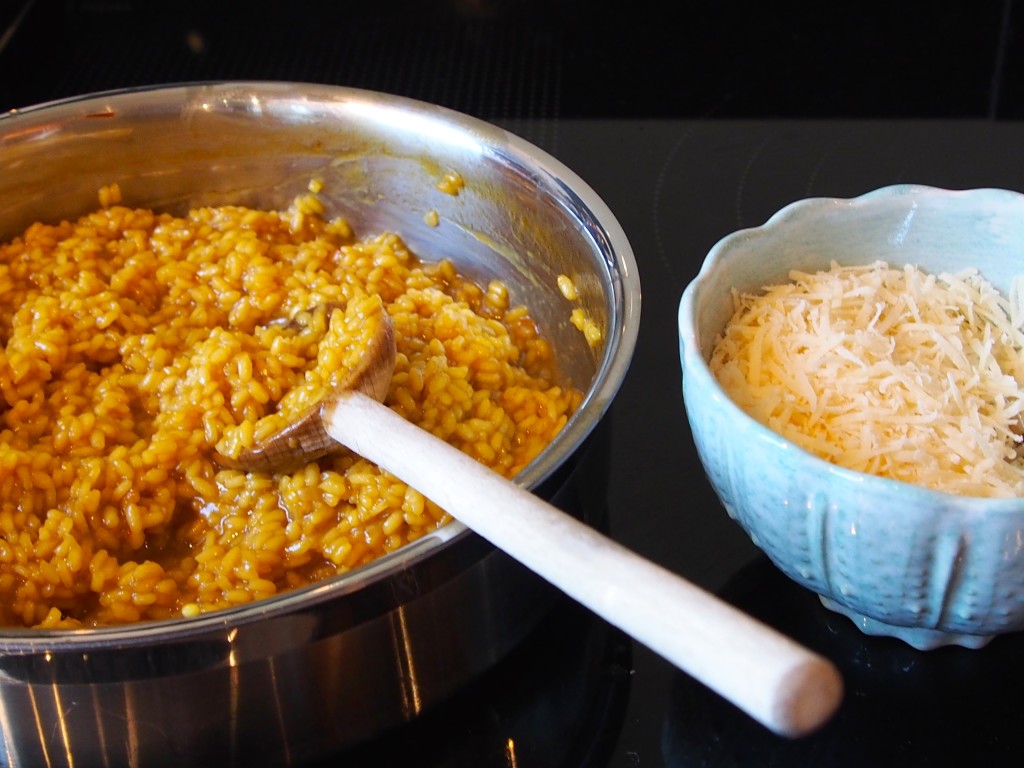
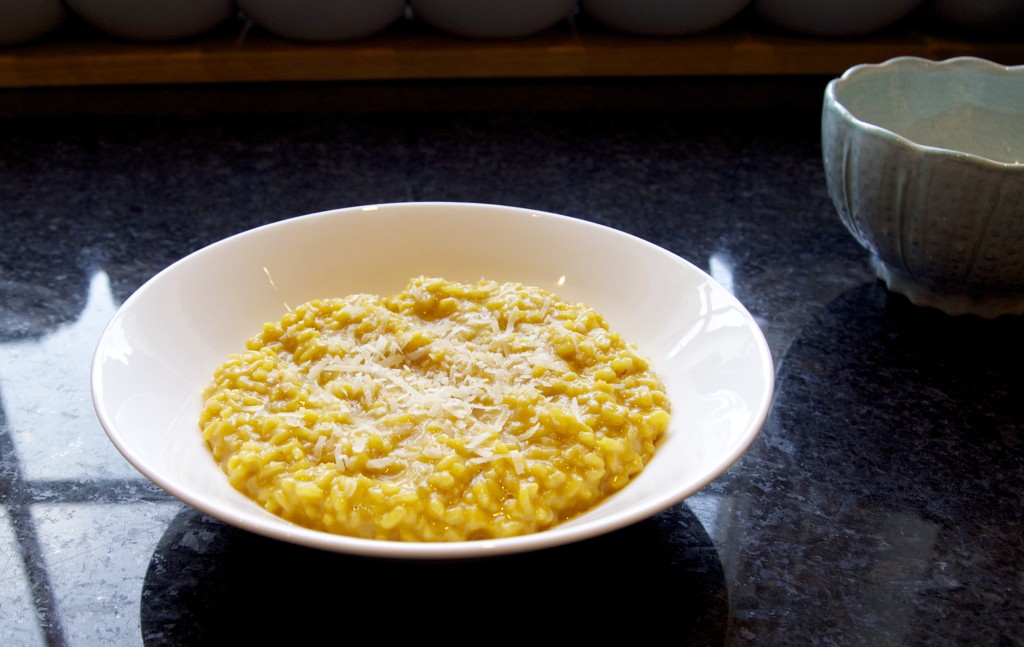
Serve the rice in a warmed bowl, with additional Grana Padano or Parmesan.
